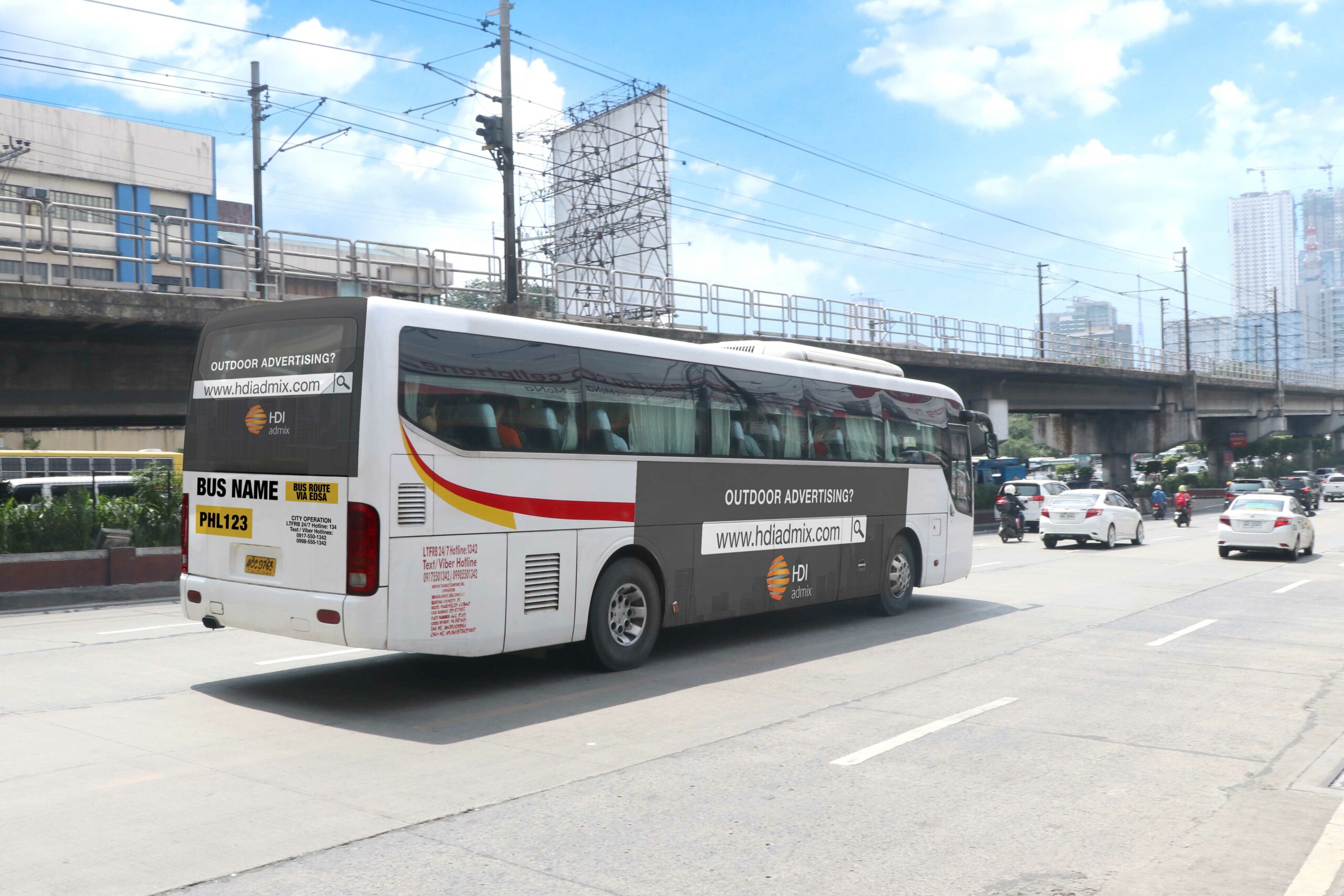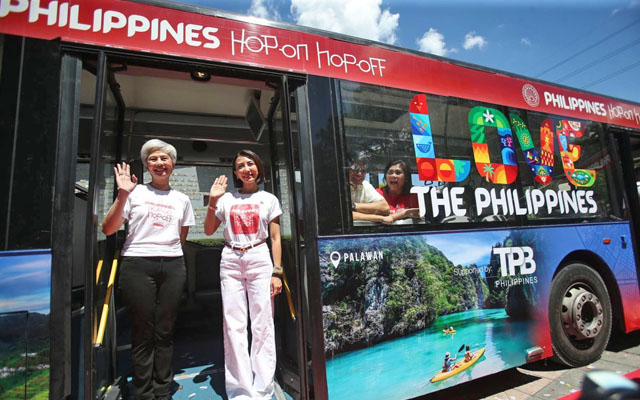Why Choose Transit Advertising Philippines for Your Brand
Why Choose Transit Advertising Philippines for Your Brand
Blog Article
Discovering the Impact and Efficiency of Transit Advertising in Urban Marketing Techniques
Transportation advertising and marketing has actually become a substantial component of urban advertising and marketing strategies, maximizing the special dynamics of public transport environments. Its capacity to reach a broad and diverse audience offers brand names with a possibility to create purposeful connections through consistent visibility. However, with the rapid evolution of innovation and changing consumer habits, the landscape of transit marketing is undertaking remarkable changes that warrant closer evaluation. What ramifications do these fads hold for marketers looking for to harness the complete possibility of this tool?
The Increase of Transit Marketing
As metropolitan populations remain to swell, the need for innovative advertising and marketing options has actually resulted in the rise of transit advertising and marketing as an essential part of urban advertising methods. This type of advertising leverages public transportation systems-- such as buses, subways, and trains-- to get to a varied audience in densely inhabited areas. The performance of transit advertising lies in its capacity to engage consumers during their everyday commutes, an usually overlooked yet critical time for brand name messaging.
With cities ending up being increasingly stuffed, conventional marketing spaces are coming to be scarce and less effective. Transit advertising and marketing offers a vibrant alternative, enabling brand names to display their messages in high-traffic areas where prospective clients are regularly revealed to the ads. Additionally, as city citizens increasingly count on public transport, the importance and presence of transportation advertising and marketing have expanded substantially.
Furthermore, technological developments have boosted the elegance of transportation advertising, permitting electronic display screens and interactive campaigns that can capture consumer interest much more successfully than static advertisements. As an outcome, transportation advertising and marketing is not only a cost-efficient option but also an important technique for brand names seeking to link with urban customers in an impactful and remarkable manner.
Secret Advantages of Transportation Marketing
The effectiveness of transportation advertising and marketing is highlighted by its diverse benefits, making it an invaluable tool for city marketing experts. Among the main benefits is its substantial reach; transportation systems serve countless passengers daily, enabling brand names to get in touch with a diverse target market in high-traffic settings. This presence boosts brand name recognition, making certain that advertisements are seen consistently by commuters.

Furthermore, transportation advertising is cost-effective contrasted to various other media, providing a reduced cost per impact while maintaining high visibility. The adaptability of advertisement formats, from bus wraps to digital screens, permits impactful and imaginative campaigns that can adjust to changing market demands.
Consumer Behavior Insights
A substantial part of consumer habits is affected by the prevalent nature of transit advertising and marketing in city settings. This type of advertising records the focus of diverse demographics, involving consumers throughout their everyday commutes. As people browse bustling cityscapes, they run into transit advertisements in various styles, including bus covers, train posters, and electronic displays. The tactical positioning of these advertisements makes best use of exposure, thus improving brand name recall.
Research study suggests that transit advertising can evoke emotional reactions, resulting in raised brand name affinity. Consumers commonly link the experience of commuting with details brands, producing a long lasting perception that influences acquiring choices. Moreover, the regularity of direct exposure to transportation ads promotes knowledge, which is an important factor in customer trust and commitment.

Additionally, the common facet of public transportation contributes to this phenomenon; as individuals share areas, they are a lot more likely to go over and suggest brands they encounter. Thus, transportation advertising and marketing not only reaches customers yet also promotes social communications that strengthen brand messaging. Comprehending these behavior insights permits marketers to customize their methods effectively, making sure that their campaigns resonate with target market in the that site city landscape.
Study and Success Stories
Effective execution of transit advertising and marketing approaches is exhibited through different case studies that highlight its performance in urban advertising. One significant example is the partnership in between a popular beverage firm and a major city's public transportation system. The campaign utilized bus wraps and indoor posters, causing a 30% rise in brand acknowledgment and a 15% surge in sales within the target demographic over 3 months.
Another successful situation involved a regional dining establishment chain that employed train station advertising and marketing to draw in travelers. By producing aesthetically striking advertisements that provided timed promotions, the dining establishment experienced an uptick in foot web traffic, with an impressive 25% increase in lunch hour patrons.
In addition, a city's tourist board launched a transportation campaign showcasing neighborhood destinations with bus quit screens and subway ads. The effort caused a substantial increase in vacationer gos to, as reported by a 40% boost in queries at site visitor facilities.
These case studies underscore the adaptability and possibility of transportation advertising to engage urban audiences successfully, showing that calculated placements can generate considerable rois and boost brand visibility in busy city settings. - Transit Advertising Philippines
Future Patterns in Transit Advertising
As metropolitan landscapes proceed to evolve, so too does the world of transportation advertising and marketing, which is positioned to embrace innovative modern technologies and methods. One substantial trend is the integration of electronic advertising displays right into public transportation systems. These dynamic displays permit real-time updates and official website targeted web content, enhancing audience engagement. Furthermore, the fostering of programmatic advertising is anticipated to gain energy, enabling advertisers to utilize data analytics for even more exact target market targeting based upon time, location, and demographic insights.
One more emerging pattern is using enhanced fact (AR) and online fact (VR) experiences within transit advertising and marketing. These immersive technologies can captivate commuters, transforming mundane journeys into interactive brand name experiences. Additionally, sustainability is ending up being progressively crucial; environment-friendly advertising materials and methods are likely to acquire traction, mirroring the expanding customer need for corporate social responsibility.
Finally, the increase of mobile connectivity will certainly promote higher assimilation in between transportation advertising and individual devices. Advertisers can develop smooth cross-channel experiences, allowing for prompt communication and engagement with possible consumers. Jointly, these fads show a transformative future for transportation advertising and marketing, providing new methods for brand names to get in touch with metropolitan target markets.
Conclusion
Transit advertising and marketing has established itself as a substantial component of city advertising methods, showing considerable performance through boosted brand presence and customer engagement. The capacity to adapt messages to specific demographics, coupled with the innovative use of technology, settings transit advertising as a driving pressure in contemporary marketing (Transit Advertising Philippines). As metropolitan settings remain to develop, the future of transportation marketing promises further improvements, guaranteeing its relevance and impact in shaping customer perceptions and habits in city landscapes
As city populations continue to swell, the demand for cutting-edge marketing remedies has led to the rise of transportation marketing as a crucial element of metropolitan advertising and marketing strategies.A considerable part of consumer actions is influenced by the pervasive nature of transit advertising in metropolitan settings. Jointly, these patterns show a transformative future for transportation marketing, using brand-new avenues for brands to connect with city audiences.
Transit advertising and marketing has actually established itself as a substantial part of city advertising and marketing strategies, showing substantial efficiency via improved brand name visibility and customer interaction. As urban link atmospheres proceed to progress, the future of transportation marketing promises further advancements, ensuring its significance and impact in shaping consumer assumptions and behaviors in urban landscapes.
Report this page